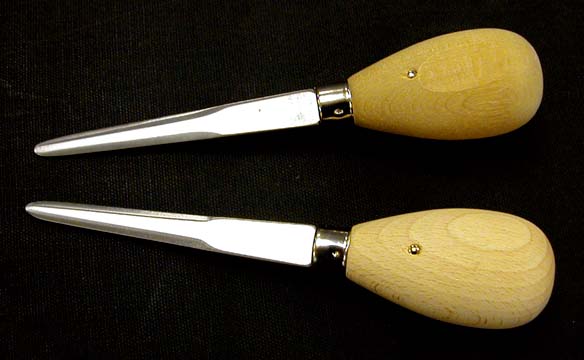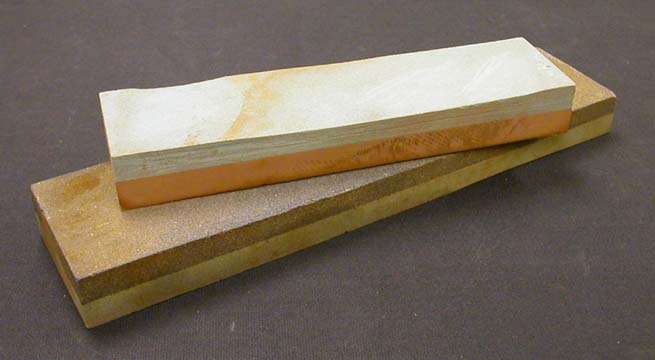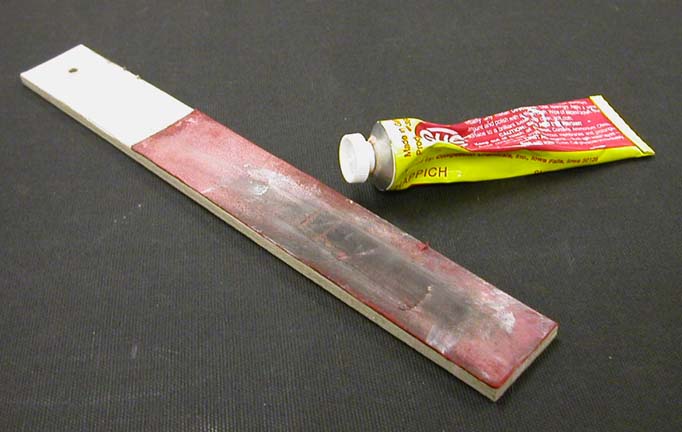Indiana University Libraries Book Repair Manual
Utility Knife

The Olfa utility knife is used for most cutting and trimming done with a knife during repairs. These knives have replaceable blades that you can snap off to get a fresh cutting edge as you work. The Olfa is the tool of choice when cutting paper or cloth along a straight-edge.
Oyster Knife

A rounded, polished steel blade in a pear-shaped wooden handle, this is an excellent tool for removing staples without damaging the paper. Simply pry up both hooks of the staple and then pull it out from the top. These tend to roll off the bench, but this problem is easily overcome by carving or filing a small flat spot or two on the handle.
Rotary Cutter

This is a handy bench-top tool for cutting narrow strips of paper, such as for spine liners. The cylindrical part at one end of the rail is the cutting head. As it is pulled to the opposite end of the tool, it rides on the rail and the circular blade cuts along the way.
Scalpel

The scalpel differs from the Olfa knife in that its blade comes to a more acute point than that of the Olfa. Also, the blades are disposable and are simply replaced in their entirety when dull. The scalpel is the cutting tool of choice when cutting tight curves in paper or cloth.
Sharpening Stones

Sharpening stones must be used with a fluid, either water or oil, depending on whether an oil stone or a water stone is being used. Otherwise, waste metal particles pack up on the surface of the stone, blocking its abrasive action. The oil or water keeps these particles in solution so the stones' abrasive surfaces remain accessible. The ones we use are water stones. What we sharpen with them most often are chisels, but we have also sharpened the guillotine and board shear blades with them, with good results. The two sides of both are of different grits. The coarsest of these removes metal very speedily; the finest leaves an edge that needs very little further dressing before use.
Strop

This doesn't have to be anything fancy; this strop was made by gluing a piece of leather to a double-thickness piece of binders board, and it works fine. It is charged with metal polish, and following final whetting with the sharpening stones it removes the last of the burrs and wire edge and brings the surfaces of the bevel and back side of the blade to a mirror-polish.